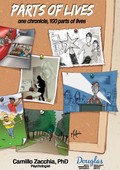In yesterday’s Montreal Gazette, former editor Norman Webster wrote about Tuol Sleng, the former high school that became S-21, the Khmer Rouge’s primary prison and torture center. Tuol Sleng and the Khmer Rouge regime represent everything that is wrong with human nature. And it is merely a single chapter in the long history of man’s inhumanity to man.
In contrast, perhaps, to my recent posts that might make you believe that all I see is love, tolerance, and positive sentiment in people, I am quite well versed in the crueler aspects of man. It is for this reason that I often write about “us versus them” thinking, segregation, the dangers of idealism and blind faith, intolerance, and similar themes. In the simple and joyful pleasures such as zealously supporting local sports teams, or our country at the Olympics, can be seen the same processes that lead to genocides and wars.
I first became interested in the Cambodian holocaust after I adopted my first daughter from Vietnam. Amy is Khmer, or Cambodian by race, and was born in Soc Trang, which is south of the Mekong. It is land that was once Cambodian. Visiting Vietnam changed my life. I was struck by the beauty of the land and most especially of its people. The inner peace and genuine pleasure that everyday activities provide for the Vietnamese, underscores the cruelty of the wars they were forced to live through. In reading about the war in Vietnam, I was drawn into the story of the parallel tragedy in Cambodia. To many world leaders, the geopolitical forces that brought the Khmer Rouge to power was an afterthought. It turned out to be the greatest tragedy of them all.
One day, I was perusing the single shelf in the Brossard municipal library dedicated to southeast Asian history, looking for a book on the Vietnam war that I hadn’t yet read, when I decided to read my first one about Cambodia. It was called When the War Was Over by Elizabeth Becker. This book opened my eyes to the holocaust. It is a journalist’s take on the events and is rich with analysis of the political forces in play at the time. As powerful as that book was, it was nothing compared to the many memoirs of survivors that I have read since.
The first of these, and by far the one that left me most drained, (perhaps because it was the first), is called Stay Alive My Son, by Pin Yathay. It is a harrowing story of a man caught in Pol Pot’s web of paranoia and idealism that destroyed a country and a culture, and took the lives of one-quarter of the population. Many other books have told similar sad stories. These include two books by Loung Ung; First They Killed My Father and Lucky Child. The first book tells her horrific story under the Khmer Rouge regime, the second of her life after coming to the United States. In Lucky Child, Ung alternates chapters of her own experiences growing up in Vermont with those of her sister’s life back in Cambodia since its liberation in 1979.
Other powerful books include When Broken Glass Floats by Chanrithy Him (her story is similar to Ung’s), and Children of Cambodia’s Killing Fields, which is a collection of memoirs written by child survivors of the regime. This last book was compiled by the late Dith Pran, whose story was told in the movie The Killing Fields. The next book I will read is on my nightstand and is called The Lost Executioner by Nic Dunlop. It tells the story of Comrade Duch, the chief executioner of Tuol Sleng.
Webster writes that Duch will be the first Khmer Rouge leader to be tried. His name is unknown to the general population, as are the names Ieng Sary, Ta Mok (deceased), Khieu Samphan, and Nuon Chea. These men were no less evil than many of Hitler’s famous henchmen such as Goering, Himmler and Mengele, yet they spent the last thirty years living relatively normal lives.
What made the Cambodian holocaust so cruelly ironic was that Pol Pot (Saloth Sar) was supposedly creating a utopia. He wanted to build a society where everyone lived for the good of the collective and lived happily off the land. In his world, families were meaningless since children belonged to Angkar, (the organization). Money was abolished, along with all personal possessions. Unfortunately, most city dwellers and educated people represented threats to Pol (they could think and question). Pol smashed everyone who disagreed with him (”smashed” being a euphemism for “eliminated”). Most were worked or starved to death or simply taken to the edge of a field and slaughtered with a swing of a shovel to the back of the head (this way bullets were conserved).
Man’s Humanity to Man
In plumbing the depths of cruelty, one also learns of an equally formidable force of human nature. It is the force that is seen in the story of all the survivors, the force that is seen in the streets and markets of today’s Southeast Asia. It is the force that guarantees the triumph of the human spirit in the face of adversity. It is in the love and compassion we feel for others. The evil in man can never break the good in him. The stories of these courageous survivors proves that.
Tagged as Cambodia, holocaust, Khmer Rouge, Killing Fields.
Posted in Anger and conflict, Human nature, Life.
Posted on 12 Jan 2009
